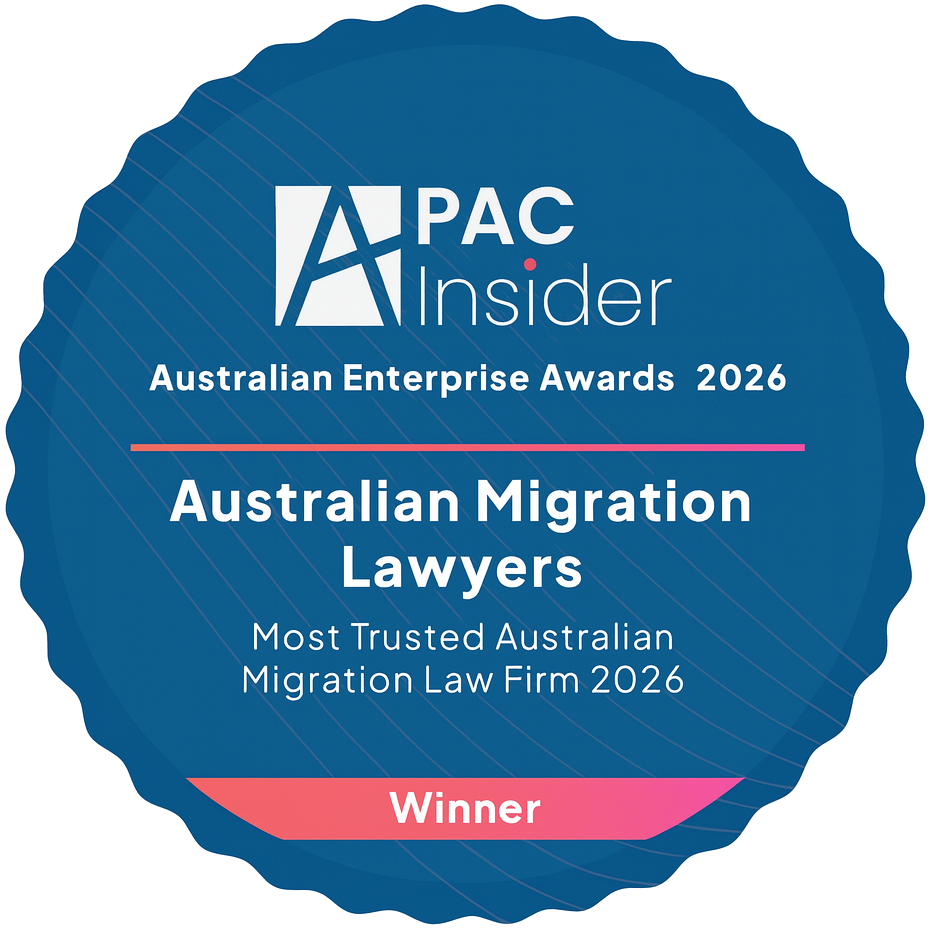Australia's largest independent migration law firm. Open 7 days! Book here.
Need help? We are available 7 days a week.

.webp)

Winner of Most Trusted Australian Migration Law Firm 2023-2026

Ranked 1st for migration law in 2023, 2024 & 2025

Ranked in the top migration lawyers 2023, 2024 & 2025

Ranked the best migration law firm 2024 & 2025
The idea of reuniting with family from overseas is an exciting prospect, making parent visas one of the most popular visa types. As a result, these visas can be a time-consuming and costly endeavor, making an informed and strong application all the more important. We highly recommend getting in touch with us here at Australian Migration Lawyers to help you through this process.
It’s important to understand that processing times can be extensive, and certain visa subclasses come with substantial financial requirements. Consequently, understanding the eligibility criteria for each parent visa type is paramount and this guide is the first step to comprehending what lies ahead of you.
There are several types of Australian parent visas available, each tailored to accommodate different age groups and individual needs. However, they can be generally be categorized into three main types as follows:
We understand that the above list can seem confusing to those not in the know when it comes to Parent Visas. If you’d like to know which parent visa type you or your loved one might suit, contact us.
Although the requirements for each parent visa type differ slightly, there are key eligibility requirements that apply to all applicants. They are:
[free_consultation]
If you are interested in getting more information about a parent visa, get in touch with Australian Migration Lawyers for a free consultation
[/free_consultation]
When it comes to applying for a parent visa, many people can experience both excitement and frustration as all applications are subject to the risk of being refused.
Thorough research and careful planning for your application is paramount. This will set a solid foundation for a successful parent visa application down the line.
It’s recommended to conduct your visa application in a systematic manner. Having a lawyer by your side who has been through the process a number of times is a great way to ensure things don’t get missed. However to help you to understand how to manage the process, we have outlined the following steps.
1. Application preparation
The initial step in your parent visa journey involves thorough preparation. This goes beyond merely filling out forms and extends to having a comprehensive understanding of the process. Prior to commencing the application process, it is imperative to compile all requisite information and documents. This includes personal identification, character documents, evidence demonstrating your ability to meet the balance of family test, and so on.
Keep in mind that the strength of your evidence significantly influences the Department of Home Affairs’ decision. To enhance the successful opportunity, a helpful approach is to construct a checklist encompassing all the necessary documents.
2. Application lodgement
Now it’s time to submit. A well-prepared and comprehensive application has the potential to speed up the Department processing times. Conversely, incomplete or unclear information can lead to delays in your application. Therefore, we highly recommend triple-checking everything before lodging your application.
3. Waiting for your visa and understanding bridging visas
After lodging your application, it's all about patience. Processing times can vary significantly based on the length of the queue, financial year quota given by the Australian government, the complexity of your case, and so forth.
However, you may be eligible for a bridging visa while waiting for your parent visa decision. This bridging visa allows you to stay lawfully in Australia until your parent visa is decided. If you are a visa holder when you apply, it will remain effective until its expiry date.
The journey of applying for a parent visa can be intricate, but with careful preparation and a clear understanding of the process, it becomes much more manageable. Should you require assistance at any stage, please do not hesitate to contact us. We are here to support you every step of the way, and together, we can work towards making your Australian migration dream a reality.
[aus_wide_service][/aus_wide_service]
There are three available aged parent visas:
Aged parent visa allows you to work and study in Australia and sponsor eligible relatives to come to Australia. As above, there are several similarities between the visa categories, for all aged parent visas, you must be in Australia (but not in immigration clearance) when you apply for the visa and when the decision on your application is made, you must not currently hold nor have previously applied for a Sponsored Parent (Temporary) (subclass 870). Furthermore, applicants must be old enough to receive the age pension in Australia.
Aged Parent visa (804):
This visa allows you to stay in Australia indefinitely, work and study in Australia, enrol in Medicare, and if eligible, apply for Australian citizenship. Additionally, you can travel to and from Australia as much as you wish for five years.
If you’re looking for faster processing times, you may want to consider applying for either the Contributory Aged Parent Visa (Subclass 864) or the Contributory Aged Parent (Temporary) Visa (Subclass 884). However, it’s important to note that both of these visas are significantly more expensive than the Aged Parent Visa (Subclass 804).
Contributory Aged Parent (Temporary) visa (884):
Contributory Aged Parent (Temporary) visas (884) enables successful applicants to reside in Australia for a maximum of 2 years as well as work and study in Australia and apply for a permanent Contributory aged parent visa (864).
Contributory Aged Parent Visa (Subclass 864):
This visa allows you to stay in Australia as a permanent resident, work and study in Australia, enrol in Medicare and if eligible, apply for Australian citizenship. As with the aged Parent visa (804), successful applicants can travel to and from Australia as much as they wish for five years.
We understand that reuniting parents and children from across the world can be an emotional journey. If you want to better understand your options when it comes to parent visas, contact us at Australian Migration Lawyers.